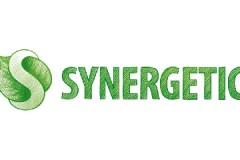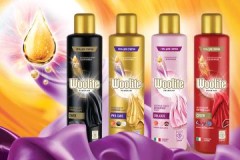How and from what can you make your own washing gel?
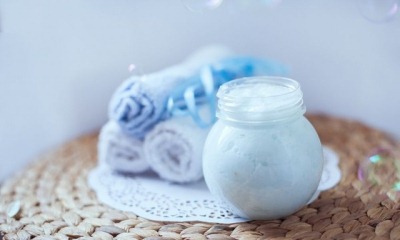 The popularity of washing gels only grows over time. Some housewives do not use purchased detergents, but prepared independently.
The popularity of washing gels only grows over time. Some housewives do not use purchased detergents, but prepared independently.
In this article, we will tell you how to make a washing gel at home with your own hands, what tools you can use for this and what, according to reviews, the effectiveness of the product is.
Content
How to cook at home?
There are many proven recipes for making your own gel. Their preparation is not very difficult and does not require special skills.
From soap
The recipe below is one of the main options, it is versatile and not difficult to make... This product does not leave behind streaks and rinses out well.
For production you need the following components:
- water - 4 liters;
- soda ash;
- 5 drops of citrus or other essential oil as a natural flavor
- laundry soap.
Manufacturing process:
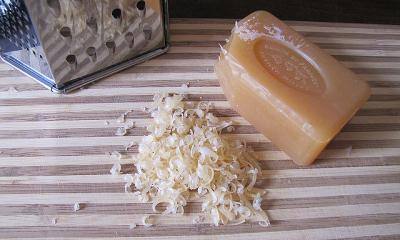 Pour 4 cups of water into a large saucepan.
Pour 4 cups of water into a large saucepan.- Rub the soap.
- Pour it into a saucepan.
- Warm up, stirring, the composition so that it becomes homogeneous.
- Pour the remaining water into a second pot.
- Pour soda into the same container (3 tbsp. L. With top).
- Put it on a small fire too.
- While stirring, bring the solution to a homogeneous state.
- If there is a desire to give the future gel a pleasant aroma, then you can add essential oil to the contents of the second pan.
- Turn off the fire.
- Pour the contents of both pots into one container.
- Mix.
- Set aside to allow the suspension to cool naturally.
- The cooled gel thickens, and it is whipped with a mixer.
- Pour into a prepared container for further storage.
The composition prepared according to this recipe is used for washing at the rate of: 1 glass of detergent for one load of laundry.
With brown
If you need not only to wash textiles with high quality, but also to disinfect them, deal with mold and disinfect, it is worth using a recipe based on borax - sodium tetraborate. You can flavor the finished composition by adding essential oils.
Required Ingredients:
- borax (dry) and baking soda - 150 g of each component;
- laundry soap - 2 bars;
- water - 5 l.
The order of work:
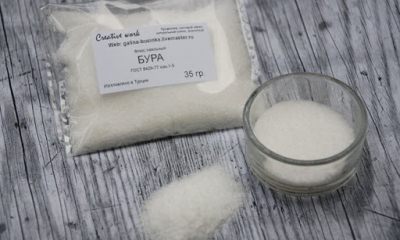 Rub all the soap.
Rub all the soap.- Pour it into a fireproof container.
- Pour 0.5 l on top. water.
- While stirring, boil until smooth.
- Add dry ingredients.
- Pour in the rest of the water gradually.
- Warm up, constantly stirring, the mixture, but do not let it boil.
- Refrigerate.
- Place in the refrigerator for a day.
- Pour into a prepared container.
This recipe is one of the softest in terms of its effect on the structure of the material, therefore it is suitable for delicate washing.
With citric acid
When choosing a composition that is suitable for the care of colored textiles, you should pay attention to the recipe based on citric acid. The components selected in it not only eliminate stains, but also maintain the brightness of the colors.
The components will be needed:
- household soap - 3 bars;
- salt - 250 g;
- citric acid - 3 large spoons;
- water - 2.5 liters.
Process of creation:
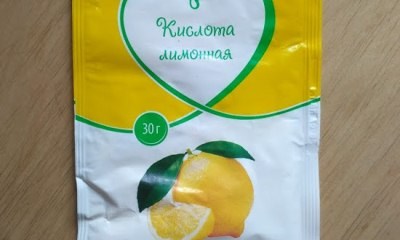 Grate the soap, preferably as small as possible - so it dissolves more easily.
Grate the soap, preferably as small as possible - so it dissolves more easily.- Pour water into a prepared saucepan.
- Heat up to + 60 ° C.
- Pour in soap shavings.
- Add all the citric acid.
- Pour in all the prepared salt.
- Mix.
- Cool down.
- Pack in containers.
With green tea
Green tea detergents have the ability to soften fabrics and neutralize unpleasant odors.
To create you will need:
- 2.5 bars of laundry soap;
- 3 large spoons of dried green tea leaves;
- 150 g of soda;
- 4.5 l. water.
Preparation:
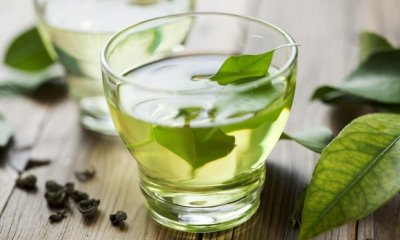 Pour 4 cups of water into a saucepan.
Pour 4 cups of water into a saucepan.- Pour in tea.
- Boil for a couple of minutes.
- Cool down.
- Strain the broth through cheesecloth.
- Grate the soap on a fine grater.
- Heat the rest of the water in a second saucepan.
- Pour in soap.
- Mix.
- Pour in soda.
- Pour in strained tea.
- Stir.
- Pour into prepared containers.
With table vinegar
Gels, which contain vinegar, allow you to get rid of unpleasant odors. At the same time, soap and soda in the composition does a good job of cleaning things.
Components:
- vinegar - ¼ glass;
- salt - 250 grams;
- water - 4 l.;
- laundry soap - 3 pieces.
Cooking steps:
- Rub the soap finely.
- Heat water up to + 50º.
- Pour soap into a pot of water.
- Stir until dissolved, but do not boil.
- Pour in vinegar, salt.
- Stir until smooth.
- Cool down.
Conditioner with white vinegar
White vinegar is a natural fermentation product. As part of a fabric softener, this component is necessary for gentle care of pile fabrics, as it makes them soft. This composition is used as a natural fabric softener.
Required components:
- 1 tbsp. white vinegar;
- 150 g of soda;
- 1 tbsp. water.
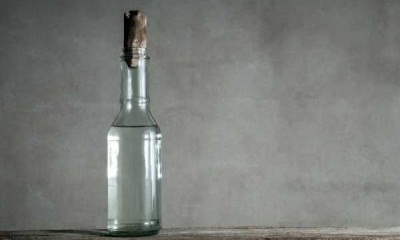 Manufacturing process:
Manufacturing process:
- Heat the water up to + 50 ° C or + 60 ° C.
- Pour in soda.
- Mix.
- Pour in vinegar.
- Mix again.
- Stir thoroughly until smooth.
Advantages of liquid
Personal-made laundry detergents in many ways benefit in comparison with purchased ones and have a number of advantages.
No surfactants in the composition
Gels made by an industrial method contain surfactants. These ingredients are one of the main ingredients. In essence, these are aggressive synthetic substances that have a negative effect on the skin and accelerate tissue wear.
No phosphates
 Many store-bought laundry detergents and gels contain phosphates or derivatives. These components are designed to remove stubborn dirt and stains.
Many store-bought laundry detergents and gels contain phosphates or derivatives. These components are designed to remove stubborn dirt and stains.
However, they have a negative effect on the human body:
- reduce immunity;
- depress the nervous system;
- badly affect the skin.
Phosphates can only get into a homemade gel if they are specially added there.
Designed for any temperature
Most of the purchased products are designed for processing in warm and hot water... This requirement is due to the peculiarities of the composition of the drug, the active components of which begin to work only when heated.
Price
Self-made laundry gels are much cheaper than purchased ones. For their storage, containers from products that have already ended can be used.
The composition of the home remedy is clear and clear from the very beginning., since all stages of creation and the quality of the ingredients introduced are personally controlled during its manufacture.
Hypoallergenic
There are few components in the composition of gels that are prepared at home. At the same time, it is possible to control all the ingredients that are added to the detergent. And avoid those you are allergic to.
disadvantages
 Making a gel on your own requires time consuming preparation, the availability of convenient packaging for packaging and strict adherence to production technology. This product has other drawbacks.
Making a gel on your own requires time consuming preparation, the availability of convenient packaging for packaging and strict adherence to production technology. This product has other drawbacks.
Almost all products contain soap... This component dissolves poorly during washing and foams poorly, especially in cold water.
Despite the fact that the homemade gel can also be used in cold water, it shows the best results at a water temperature of + 40 ° C.
Soda ash or baking soda
As one of the components, the gel can include calcined soda... This component has a significant drawback - washing out bright shades, which leads to tarnishing of clothes, especially with repeated washing.
Baking soda - an alternative... But this component also has a drawback: when replacing soda ash with baking soda, the effect of washing becomes lower.
What a homemade laundry detergent can't handle?
Even a home-made gel saturated in composition does not cope with all types of contamination. These stubborn stains include:
- coffee;
- chocolate;
- juices;
- fruit;
- tea;
- grass, etc.
Application features
Homemade gel is different from the purchased one. The features of use include the following points:
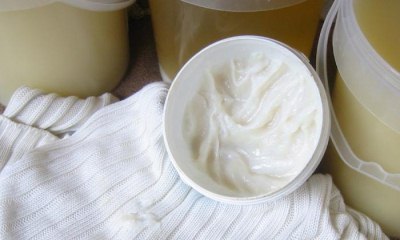 It is better to pour the gel directly into the drum, and not into the container intended for the washing powder on the machine body. This will prevent part of the product from smearing on the walls of the tray.
It is better to pour the gel directly into the drum, and not into the container intended for the washing powder on the machine body. This will prevent part of the product from smearing on the walls of the tray.- For greater effect from the washing process, it is advisable to pre-soak.
- Calculation of the norm for homemade washing gel: for 4 kg of laundry - not less than ½ cup of detergent and not more than 1 cup. For stubborn stains on clothes, the dosage can be increased (+150 ml) per load.
- You can also use the gel for manual, and for machine washable clothes. And also for cleaning.
Reviews
A large number of recipes allows each housewife to choose the best option for making homemade washing gel. Many people complain that self-prepared gels are less effective than purchased ones, laundry is washed worse, and loses color.
Recommendations on the topic
While preparing the washing gel, We recommend using the following tips:
- The required dose of gel per wash should be increased if the clothes are very dirty or if the tap water is too hard.
- Pre-soaking the laundry makes washing easier.
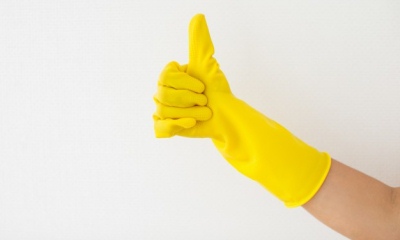 There are no foaming agents in the composition of the gels, but the washing quality does not decrease from this.
There are no foaming agents in the composition of the gels, but the washing quality does not decrease from this.- It is recommended to wash colored items at a water temperature of + 40 ° C.
- Old dirt should be soaked first.
- When increasing the dosage of the gel, it is imperative to use the additional rinse function.
- Vinegar disappears very quickly. Even at the stage of drying things.
- Gels do not pose a threat to the insides of the washing machine.
- The gel should be stored at room temperature, as the composition can thicken strongly in the cold.
- Even before you start preparing the gel, you should take care of preparing the container into which the detergent will be poured.
You will find a lot of useful and important information about washing gels in this section.
Related videos
Washing gel from white soap and baking soda, video recipe:
Conclusion
Do-it-yourself laundry gels can serve as a worthy alternative to purchased products. When used correctly, they can be used for the regular care of things for adults and children. And only with old, complex stains, the use of stain removers may be required.

